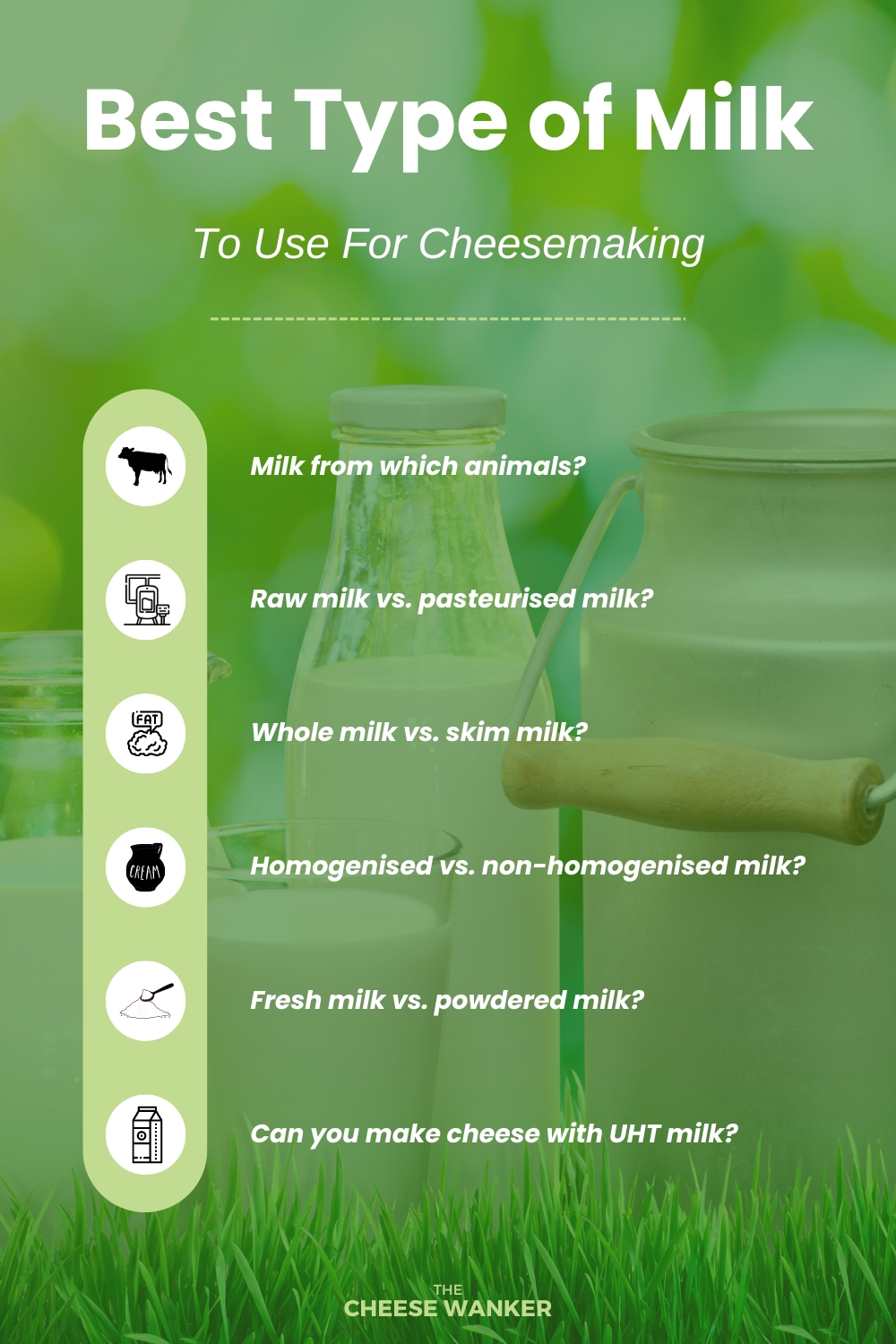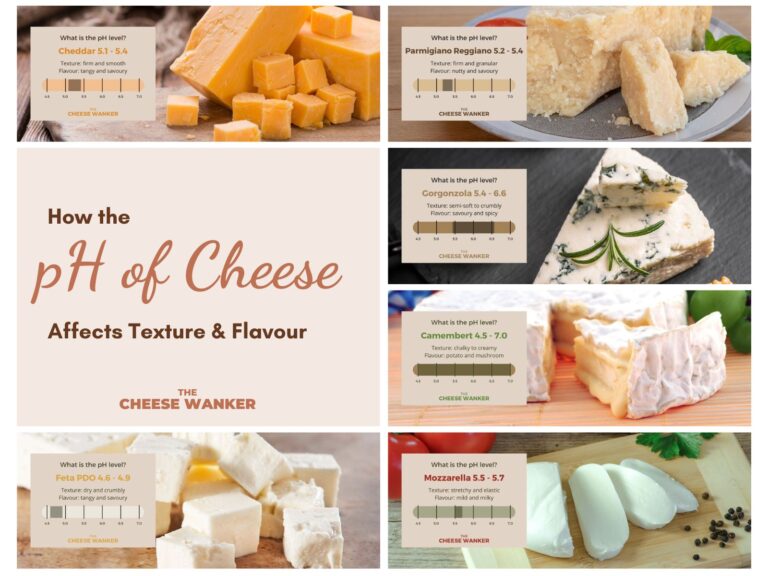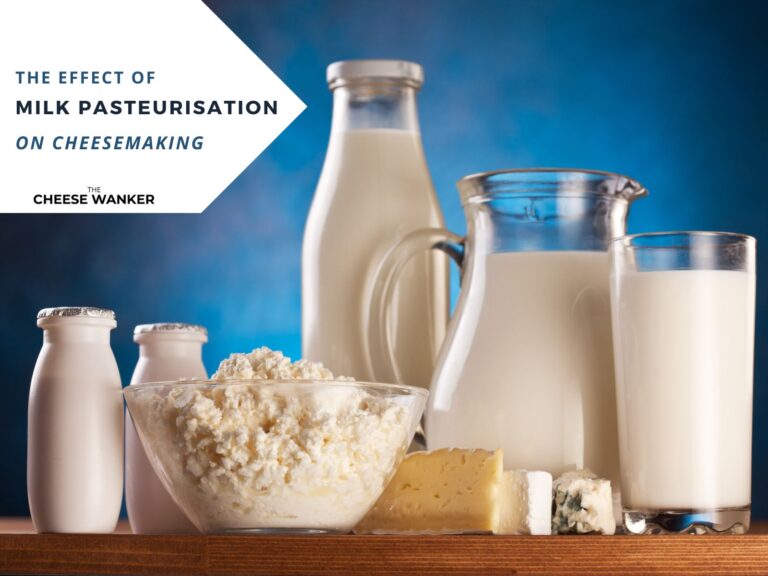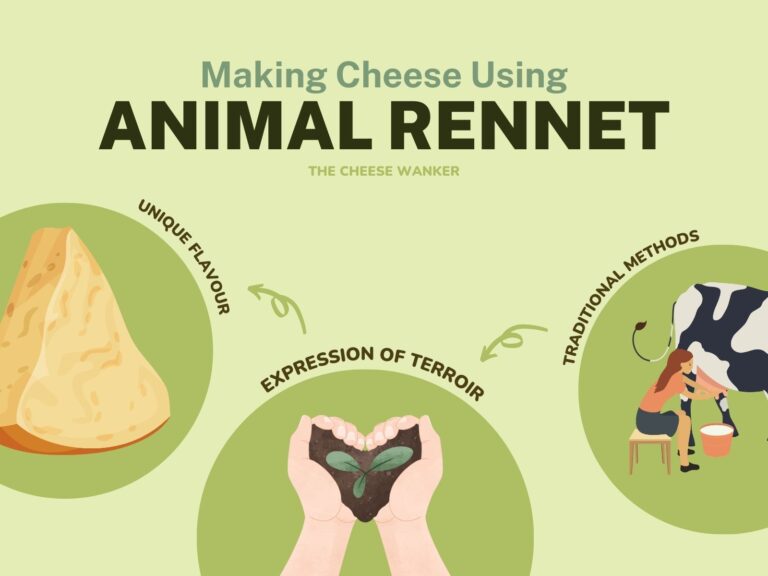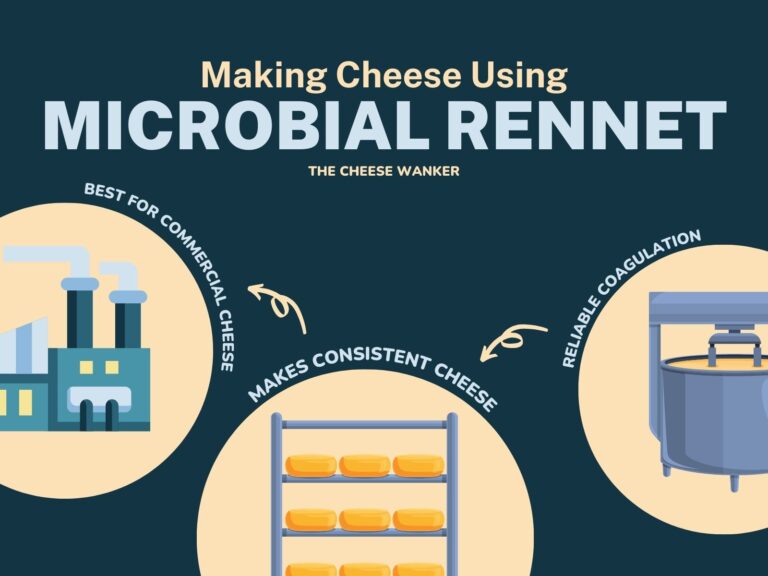When it comes to crafting the perfect cheese, the choice of milk is paramount. The type of milk you use can significantly impact the flavour, texture, and overall quality of your cheese. In this guide, we’ll explore the various factors that influence the selection of milk for cheesemaking. From the source of milk to processing techniques, we find out what the best type of milk for cheesemaking is.
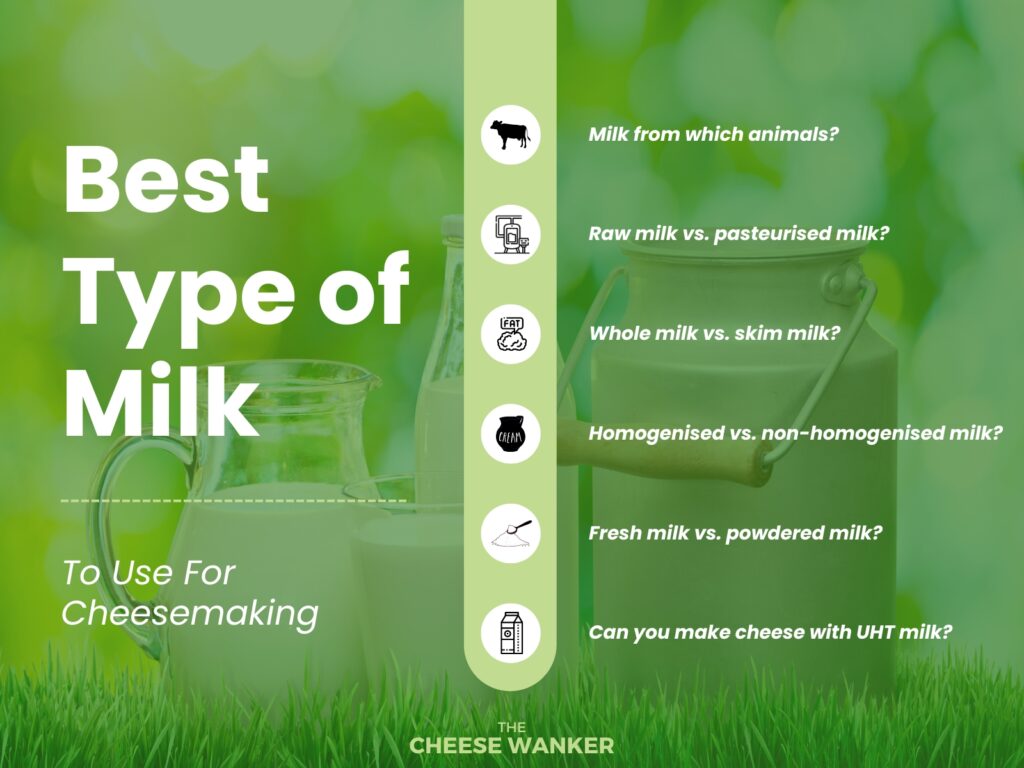
What ingredients do you need to make cheese?
Before we dive into the milk selection, it’s important to briefly touch on other vital ingredients for cheesemaking. These include rennet, starter cultures and salt. Each ingredient plays a specific role in the cheesemaking process, contributing to the final product’s flavour, texture, and longevity.
Rationale for milk selection
The choice of milk for cheesemaking is a critical decision that directly impacts the flavour, texture and quality of the final product.
When selecting the appropriate milk for your cheese, several key factors come into play. Let’s take a look at the most important ones.
Which animal’s milk should you use?
The best source of milk for cheesemaking depends on the type of cheese you want to produce. This is because different cheeses require different milk characteristics.
Here are some common sources of milk used in cheesemaking:
1. Cow’s milk
Without a doubt, cow’s milk is the most common choice for cheesemaking. It produces a wide variety of cheeses, including Cheddar, Parmesan and Gouda. Since the fat content in cow’s milk can vary, the cheeses display a range of textures and flavours.
2. Goat’s milk
Goat’s milk is often used to make cheeses like Chèvre, Feta and Chevrotin. Undoubtedly, goat milk has a distinct flavour and can result in creamy and tangy cheeses.
3. Sheep’s milk
Sheep’s milk is used to make cheeses like Pecorino Romano and Roquefort. It has a higher fat content than cow’s milk, which contributes to the rich and robust flavours of these cheeses.
4. Buffalo milk
Buffalo milk is primarily used for making Mozzarella di Bufala, which has a unique texture and flavour compared to cow’s milk versions.
5. Mixed milk
Some cheeses are made using a combination of different milk types, such as cow’s, goat’s and sheep’s milk. This can result in complex and nuanced flavours. Actually, this practice is very common in Greece.
6. Other milk
While cow, goat, sheep and buffalo milk are the most commonly used animal sources for cheesemaking, there are some non-traditional and more exotic animal sources that can also be used to make cheese.
Some great examples include camel milk, yak milk, moose milk, donkey milk and alpaca milk.
Ultimately, the best type of milk for cheesemaking depends on your personal preferences and the type of cheese you want to produce. As always, it’s important to follow specific recipes and techniques tailored to the type of milk you choose to ensure the best results.
Raw milk vs. pasteurised milk
Whether you should use raw or pasteurised milk for cheesemaking depends on various factors, including your personal preferences, the type of cheese you want to make, and local regulations.
Both raw and pasteurised milk can be used to make cheese, and each has its own advantages and considerations.
Making cheese with raw milk
- Flavour complexity: Raw milk can contribute to a more complex and nuanced flavour in some cheeses. This is due to the presence of beneficial bacteria and enzymes naturally found in the milk.
- Local regulations: The use of raw milk for cheesemaking is subject to strict regulations in many countries and regions due to concerns about food safety. Indeed, it may be illegal or heavily regulated in some areas.
- Quality control: If you choose to use raw milk, it’s essential to ensure that it comes from a reliable and clean source. By doing so, you will minimise the risk of contamination with harmful bacteria. Many artisanal cheesemakers work closely with local dairy farmers to source high-quality raw milk.
Making cheese with pasteurised milk
- Food safety: Pasteurisation involves heating the milk to kill harmful bacteria. Overall, this process can reduce the risk of foodborne illnesses associated with raw milk consumption. Moreover, it also increases the shelf life of the cheese.
- Consistency: Pasteurised milk provides more consistent results in terms of flavour and texture. Hence, it is a good choice for beginners and commercial cheese production.
- Legal and regulatory compliance: In many places, using pasteurised milk is the safest and most convenient option because it complies with food safety regulations.
Should you use raw or pasteurised milk?
Ultimately, the decision between raw and pasteurised milk should consider both safety and flavour preferences. If you have access to high-quality, clean raw milk and are comfortable with the associated risks, you should use it.
However, if you’re just starting with cheesemaking or if raw milk is not readily available or regulated in your area, pasteurised milk is a reliable and safe choice.
Regardless of the type of milk you use, proper sanitation and hygiene practices are crucial to produce safe and delicious cheese.
Whole milk vs. skim milk
Next, we have the choice between whole (full-fat) milk and skim (low-fat) milk for cheesemaking. While both whole and skim milk can be used in cheesemaking, they will yield different results.
Making cheese with whole milk
- Flavour and texture: Whole milk contains a higher percentage of fat, which contributes to a creamier and richer texture in the cheese. It also imparts a fuller, more luxurious flavour.
- Cheese types: Whole milk is commonly used for making cheeses like Cheddar, Brie, Gouda and many other varieties that benefit from a full-bodied flavour and creamy texture.
- Fat content: The fat content in whole milk is typically around 3.25% or higher.
Making cheese with skim milk
- Lower fat content: Skim milk has had most or all of its fat removed, resulting in a lower fat content (usually around 0.1% to 0.5%).
- Cheese types: Skim milk is often used for making cheeses like Cottage Cheese, Ricotta, and some types of low-fat or reduced-fat cheeses. It produces cheeses with a leaner and less creamy texture.
- Whey proteins: Skim milk cheeses may have a slightly different protein profile due to the absence of fat, which can affect the final texture and meltability of the cheese.
Which cheeses can you make?
The choice between whole and skim milk should align with the specific cheese you are making. Many recipes will specify the type of milk to use.
Some cheeses, like traditional Cheddar, benefit from the richness of whole milk. On the other hand, others like Cottage Cheese, are traditionally made with skim milk for a leaner texture.
Keep in mind that you can also use partially skimmed milk (2% or 1%) to strike a balance between whole and skim milk characteristics. Experimentation with different milk types and fat levels can lead to unique flavours and textures, so feel free to explore and tailor your cheesemaking to your preferences.
Homogenised vs. non-homogenised milk
The choice between homogenised and non-homogenised milk for cheesemaking depends on the type of cheese you are producing and your desired outcome. Both types of milk can be used, but they can yield different results in terms of cheese texture and fat distribution.
Using homogenised milk
- Definition: Homogenisation is a process that breaks down fat globules in milk into smaller, uniform particles. This process prevents the cream from separating and rising to the top of the milk, resulting in a consistent fat distribution throughout the milk.
- Cheese texture: Homogenised milk produces a softer curd which results in cheeses with a more uniform texture and a smoother mouthfeel. If the curd is too soft to form cheese, you can add calcium chloride.
- Cheese types: Moreover, homogenised milk is commonly used in many commercial cheese production processes because it provides consistent results. It is suitable for various cheese types, including Ricotta, Feta and processed cheeses.
Using non-homogenised milk
- Definition: Non-homogenised milk retains the natural separation of cream, which rises to the top of the milk. It has larger fat globules that may form a cream layer.
- Cheese texture: Non-homogenised milk can produce cheeses with a more rustic or uneven texture, and the cream layer may contribute to a richer flavour in some cases.
- Cheese types: Non-homogenised milk is often preferred for traditional, artisanal and farmhouse-style cheeses. It is used for cheeses like Cream Cheese, farmstead Cheddar and most specialty cheeses.
Which types of cheese can you make?
The choice between homogenised and non-homogenised milk can influence the texture, mouthfeel and flavour of your cheese. If you are aiming to replicate traditional or artisanal cheese styles, non-homogenised milk might be the better choice.
However, if you are looking for consistency and uniformity, homogenised milk can be a good option.
Ultimately, the decision depends on your preferences and the specific cheese you want to make. You can experiment with both types of milk to see how they affect the characteristics of your homemade cheese and choose the one that aligns best with your desired outcome.
Fresh milk vs. powdered milk
In cheesemaking, whether you should use fresh milk or powdered milk depends on your circumstances, the type of cheese you’re making, and your preferences. Both fresh milk and powdered milk can be used, and each has its advantages and considerations.
Making cheese with fresh milk
- Definition: Fresh milk is milk that has not undergone any dehydration process and is typically used directly from the cow, goat, sheep or other milk-producing animals.
- Advantages: Fresh milk can provide a more natural and authentic flavour to your cheese. It is a common choice for traditional and artisanal cheesemaking. The quality of the milk, its freshness, and its source are critical factors.
- Considerations: Fresh milk can be more challenging to obtain, especially if you don’t have access to a dairy farm. It also has a shorter shelf life compared to powdered milk, so it should be used promptly.
Making cheese with powdered milk
- Definition: Powdered milk is milk that has been dehydrated, removing the moisture content. It is available in various forms, including instant, non-fat and whole milk powder.
- Advantages: Powdered milk has a longer shelf life and can be more convenient to store and use. It is also readily available in many grocery stores, making it accessible for cheesemakers. It can be a consistent source of milk year-round.
- Considerations: Some cheesemakers believe that powdered milk may lack the depth of flavour and complexity that fresh milk provides. Furthermore, the type of powdered milk you choose (whole or non-fat) can influence the final flavour and texture of the cheese.
Which one should you use?
When deciding between fresh milk and powdered milk, consider the following:
- Cheese type: Some cheeses, especially traditional and artisanal varieties, benefit from the use of fresh milk to achieve their distinctive flavours and textures. However, powdered milk can work well for many cheese types, particularly when fresh milk is not readily available.
- Quality: If you choose to use fresh milk, ensure it comes from a clean and reliable source. The quality of the milk directly affects the quality of the cheese.
- Convenience: Powdered milk is convenient, has a longer shelf life, and is more accessible in urban areas or where fresh milk isn’t readily available.
- Flavour preferences: Consider your personal preferences for cheese flavour and texture when making your choice.
Ultimately, you can experiment with both fresh milk and powdered milk to see which one produces the cheese characteristics you desire. As always, it’s essential to follow a trusted cheesemaking recipe and technique, whether you use fresh or powdered milk, to achieve the best results.
Can you make cheese with UHT milk?
Yes, it is possible to make cheese with UHT (Ultra-High Temperature) milk, but it can be more challenging than using fresh pasteurised milk or raw milk.
UHT milk has undergone an intense pasteurisation process where it is heated to a very high temperature for a short period to kill bacteria and extend shelf life. This process alters the milk’s proteins and can affect its ability to coagulate and form curds, which are essential for cheese production.
Here are some considerations and tips if you want to attempt cheesemaking with UHT milk:
Select the right cheese types
Some cheeses are more forgiving when using UHT milk than others. Acid-set cheeses like Paneer, Labneh or Quark may be more successful than aged, hard cheeses. UHT milk is generally not recommended for cheeses that rely on complex bacterial and enzymatic activity for flavour development.
Use calcium chloride
UHT milk may lack the calcium content needed for proper curd formation. Adding calcium chloride as a supplement can help improve curd structure.
Adjust coagulation times:
Due to the altered protein structure in UHT milk, you may need to adjust coagulation times. It might take longer for the milk to set, so be patient.
Choose the right starter cultures and rennet:
Select starter cultures and rennet appropriate for the type of cheese you’re making and consider those that work well with UHT milk.
Temperature control
Maintain precise temperature control during the cheesemaking process, as UHT milk may be more sensitive to temperature variations.
Expect variability
UHT milk can produce more variable results compared to fresh pasteurised milk. You may need to experiment and adjust your cheesemaking process to achieve consistent results.
Additives
Some cheesemakers choose to add specific additives or enhancers like lipase to improve the texture and flavour of cheese made with UHT milk.
While it’s possible to make cheese with UHT milk, it may not yield the same results as cheese made with fresh pasteurised milk or raw milk.
Traditional cheesemaking often relies on the natural characteristics of milk, which can be altered by the UHT process. If you’re new to cheesemaking, you might want to start with fresh pasteurised milk or non-UHT milk rather attempting it with UHT milk.
Conclusion
In the world of cheesemaking, the choice of milk is a crucial step that should align with your cheesemaking goals and preferences.
The type of milk you select—be it from cows, goats, sheep, or other sources—raw or pasteurised, whole or skim, homogenised or non-homogenised, and fresh or powdered—will all contribute to the character of your final creation.
By understanding these factors and experimenting with different milk types, you can embark on a delicious journey to craft cheeses that suit your palate and style. Remember to follow trusted recipes and techniques for the best results in your cheesemaking endeavours.
What’s your favourite type of milk for cheesemaking? Let us know in the comments below.
